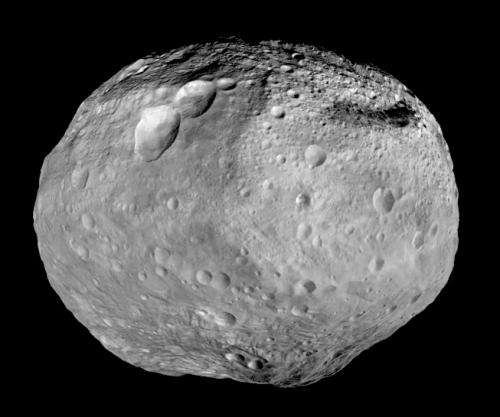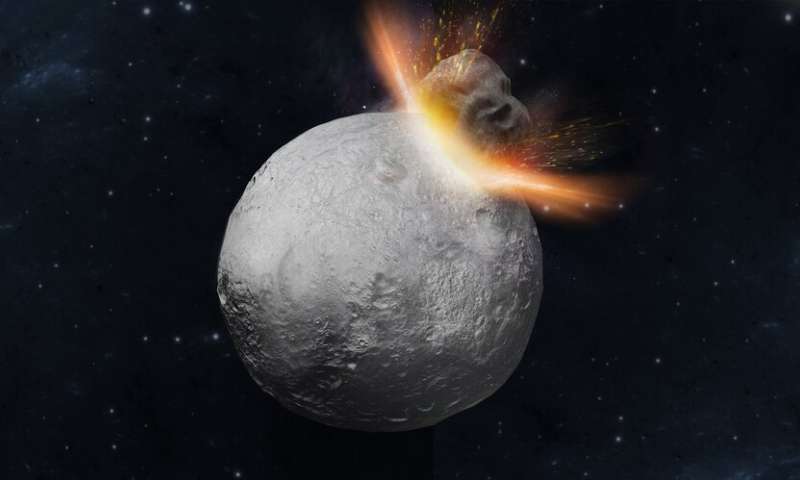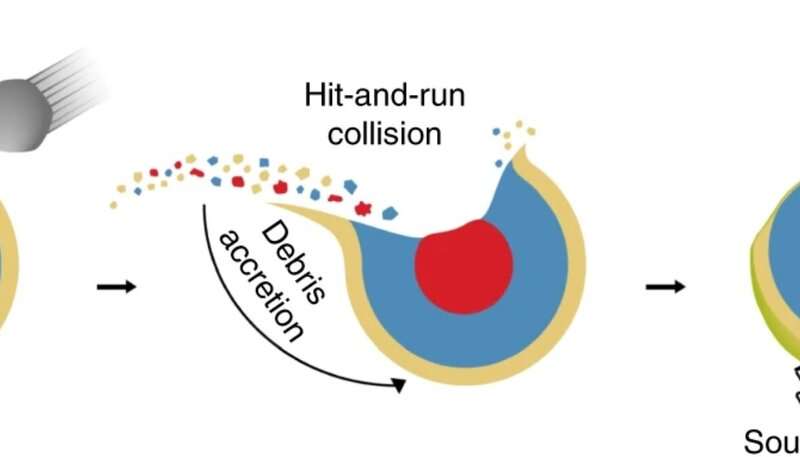June 11, 2019 report
Study of mesosiderite zircons suggests Vesta was struck by a very large rock

A team of researchers from Australia, Switzerland and Japan has found evidence suggesting that the asteroid Vesta was stuck by a very large rock approximately 4.5 billion years ago. In their paper published in the journal Nature Geoscience, the group describes their study of the asteroid and what they believe is material from it.
Vesta is the second most massive object in our solar system's asteroid belt—Ceres is the largest. It has a diameter of approximately 525 kilometers and comes close enough to Earth at times to be seen with binoculars. In this new effort, the researchers used data from the Dawn spacecraft that orbited the asteroid back in 2011 and 2012 and studied asteroid fragments found here on Earth to learn more about its history.
Space scientists classify asteroids into one of three types: stony, iron and stony/iron; some stony/iron asteroids are subdivided into a category called mesosiderites—their chemistry suggests their constituent materials came from other, larger asteroids that collided. They are made from both crust material and core material that was flung into space. The researchers studied five such mesosiderites found in northwest Africa, the U.S. and Chile. They noted they contained zircon crystals that likely formed from molten metals that originated in the core of a large asteroid. Testing suggested the asteroid they came from was likely 530 kilometers in diameter, which is a close match with Vesta.
The team then took a close look at the crystals in the mesosiderites. They estimated that the silicates formed approximately 4.55 billion years ago, and that the mixing of the metals occurred approximately 4.52 billion years ago.
-

Artist's concept of a massive 'hit-and-run' collision hitting Asteroid Vesta. Credit: Mikiko Haba -

The proposed model describes a collision between Vesta, as the parent body of mesosiderites and HED meteorites, and a smaller planetesimal with a mass ratio of 0.1. The impact resulted in a major dent in Vesta's northern hemisphere, followed by debris accretion in the southern hemisphere, accounting for the thick crust observed by NASA's Dawn mission. Credit: Makiko Haba
The researchers propose that a large, stony asteroid struck Vesta approximately 4.5 billion years ago so hard that both crust and core material was blasted off the asteroid into space. They further suggest that some amount of the debris also fell back onto Vesta's surface, which they note would explain the thicker crust on the surface near where they believe the impact happened. They also note that Vesta has overlapping craters near the same area—reminders of smaller impacts. They suggest those smaller impacts were behind the formation of the mesosiderites they have been studying.
More information: Makiko K. Haba et al. Mesosiderite formation on asteroid 4 Vesta by a hit-and-run collision, Nature Geoscience (2019). DOI: 10.1038/s41561-019-0377-8
Journal information: Nature Geoscience
© 2019 Science X Network




















